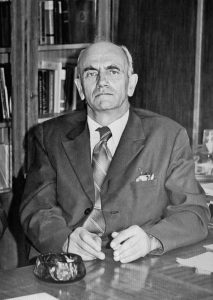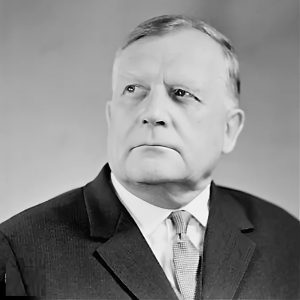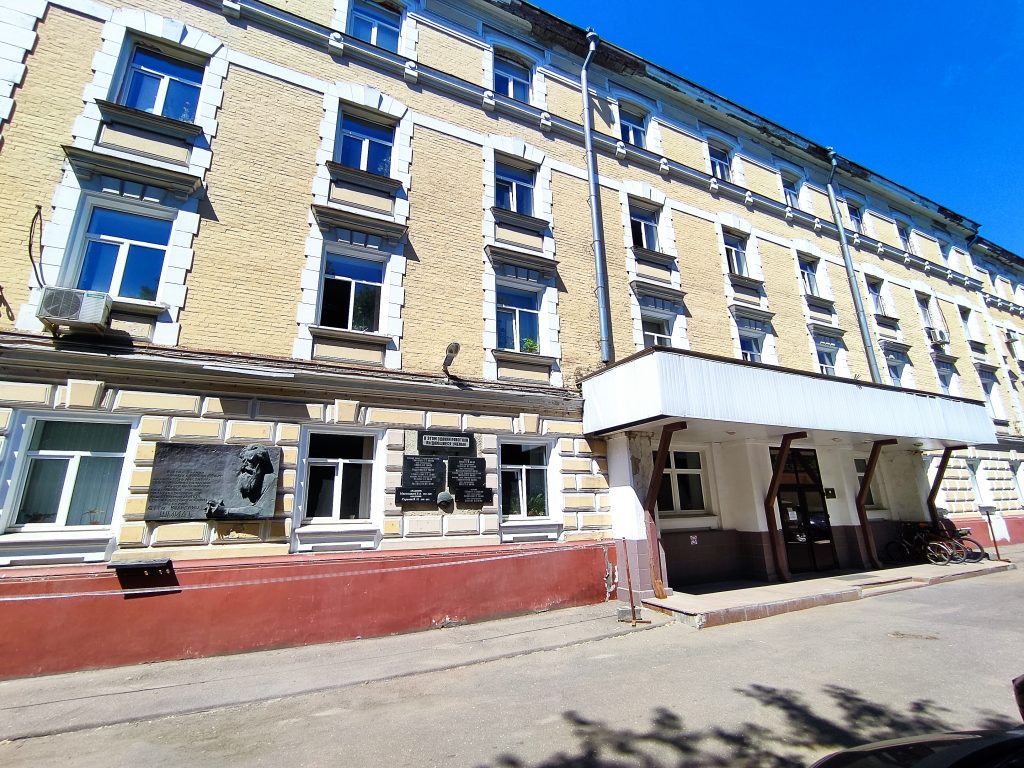Alexander Mikhailovich
Obukhov
1918-1989

Alexander Mikhailovich Obukhov was a geophysicist, climatologist, mathematician, one of the founders of modern theories in the field of mathematical statistics, turbulence and global climate change. He was born in Saratov. A. M. Obukhov started working at the age of 16, entering the Institute for the Study of Drought and Dry Winds (Saratov) in the spring of 1934 as an observer-actinometrist. He worked until the autumn of 1935, and then continued to work in meteorological institutions in the summer, being already a student. He studied at Saratov University for several years. From the 4th year he was transferred to the Mechanics and Mathematics Faculty of Moscow State University (Department of Probability Theory), graduating in 1940, and then – postgraduate studies at the Research Institute of Mathematics at Moscow State University (1941). He was a Doctor of Physical and Mathematical Sciences, he had his PhD – “Statistical description of continuous fields”. He made a significant contribution to atmospheric physics, geophysical hydrodynamics, and the theory of turbulence. He is one of the creators, together with A.N. Kolmogorov, of theories of small-scale turbulence. Obukhov’s name bears a number of laws and parameters in this field of physics. He was awarded the Orders of Lenin, the October Revolution, the Red Banner of Labor, the Badge of Honor and other awards.
Vladimir Vladimirovich
Belousov
1907-1990

Vladimir Vladimirovich Belousov was born on October 30, 1907 in Moscow. In 1917, Vladimir entered a real school, having stayed there only for a couple of years, he received further secondary education at a music school and a technical school in the piano class. In 1927 he entered the Faculty of Physics and Mathematics of Moscow University, in 1930 he left the university and moved to Leningrad, where he graduated from LSU. In the period from 1929 to 1931, he participated in geological research in Transbaikalia as a part of M.M. Tetyaev’s group. In 1933, he began geological research in the Caucasus, culminating in 1938 with the defence of his doctoral dissertation “The Greater Caucasus. In 1943, he organized the Laboratory of Theoretical Geotectonics at the Institute of Theoretical Geophysics of the USSR Academy of Sciences (later – the Geodynamics Department of the Institute of Earth Physics of the USSR Academy of Sciences). In 1953, at the Department of Dynamic Geology of Moscow State University, he organized and headed the Laboratory of Tectonophysics (since 1970 – the Laboratory of Tectonophysics and Geotectonics). The laboratory was created in order to clarify the mechanisms of formation of tectonic structures identified during detailed field observations in various regions, followed by mathematical and physical modeling of these structures on equivalent materials, comparison of natural and model structures and formulation of the concept of their formation. He developed and justified a new method of historical and tectonic research – the method of capacity analysis. He applied the method of analysis of facies and capacities to sedimentary deposits of the European part of the USSR and found that, unlike geosynclinal structures, large platform structures are characterized by stability and do not experience inversion. Throughout his scientific career, he firmly adhered to the concept of fixism. He was awarded the Orders of the Badge of Honor, the Red Banner of Labor, Lenin, and the Red Banner of Labor.
Address: Moscow, Bolshaya Gruzinskaya str., 10, p. 1

